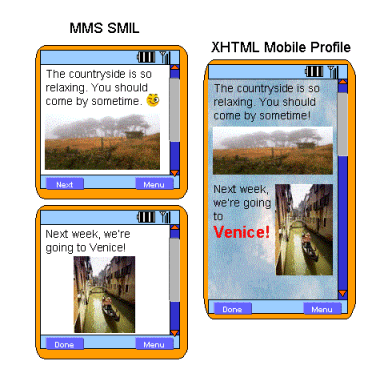Overview
Developers can now use the Openwave SDK 6.2 to start validating their MMS
content on devices that will ship with Openwave MMS software.
The Openwave MMS Toolkit leverages the Openwave Mobile Browser
core features to provide MMS networking and MMS message viewing functionality
that complies with the WAP and 3GPP MMS specifications, the GSMA M-Services
Guidelines, and the MMS Conformance Document.
The first release of the
MMS toolkit is focused on fully supporting WAP 206 "Wireless Application
Protocol, MMS Client Transactions", WAP 209 "Wireless Application Protocol, MMS
Encapsulation Protocol, and the MMS Conformance Document, version 2.0. These
specifications are available at http://www.openmobilealliance.org/.
MMS message viewer is the component of the toolkit that handles all
aspects of viewing an MMS Message including interpreting the multi-parts of the
message, interpreting the presentation format, parsing the content for
links/smileys, navigation within an MMS SMIL slideshow, and displaying the
slideshow presentation. 
With the exception of the browser menu and title bar being disabled, the
message viewer's basic functionality is the same as the browser GUI.
Multipart support
The MMS message viewer is capable of parsing
messages in either:
- Plain-text
- Multipart-related
- Multipart-alternative
- Multipart-mixed
For multipart-related documents, the MMS viewer will show the SMIL presentation document.
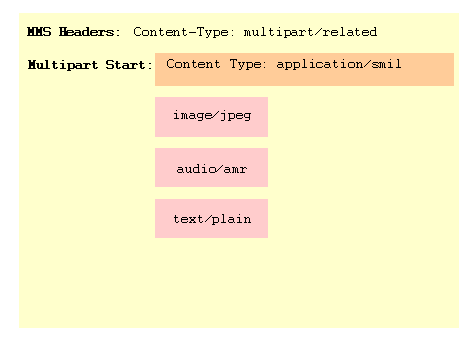
For multipart-alternative documents, the MMS viewer will select the presentation part using a bottom to top order of preference. In the example below, XHTML Mobile Profile will get rendered.
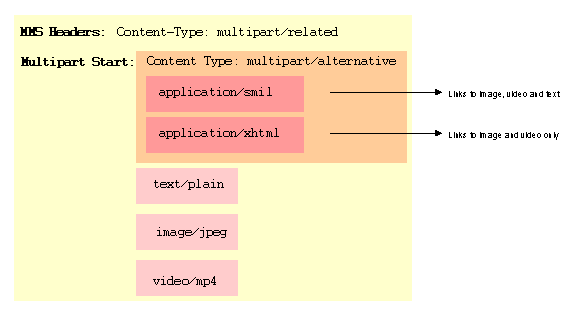
For multipart-mixed documents, the MMS viewer will process the elements sequentially, top to bottom.
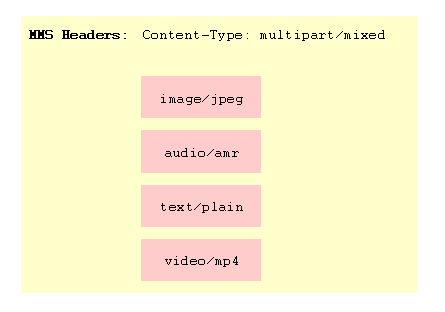
In multipart-mixed, elements of the document are displayed inline by default. However, device manufacturers may choose to also allow attachments. In this case, developers can use the Context Disposition attribute to use attachment instead of inline for specific elements.
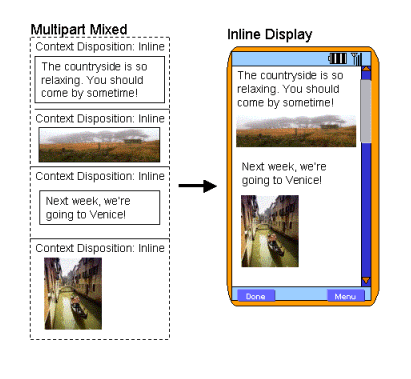
Inline context disposition will tell the viewer to list the element sequentially in the display. Attachment context disposition will tell the viewer to create a separate card with that element specified, and link it to the root card of the deck through a hyperlink at the bottom of the document (illustrated bellow).
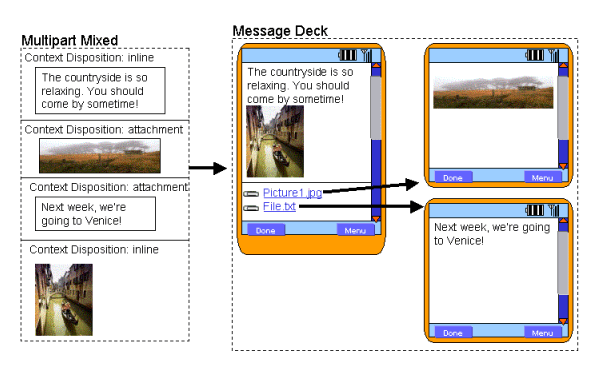
Message Presentation
The message viewer handles content in XHTML Mobile Profile or MMS SMIL. The following table highlights some of the differences between the presentation types.
| Presentation Types | Feature Summary |
| MMS SMIL |
|
| XHTML Mobile Profile |
|
The figure below highlights some of the differences between the markups. The MMS SMIL presentation consists of a slideshow that can play automatically and/or be user navigated through the softkey labeled "Next". The format consists of the text block (with embedded smileys) with an image following. The XHTML Mobile Profile deck is similar in that text and images can be mixed. However, XHTML also has tables for formatting, background images, font styles, font size control, and CSS properties.
